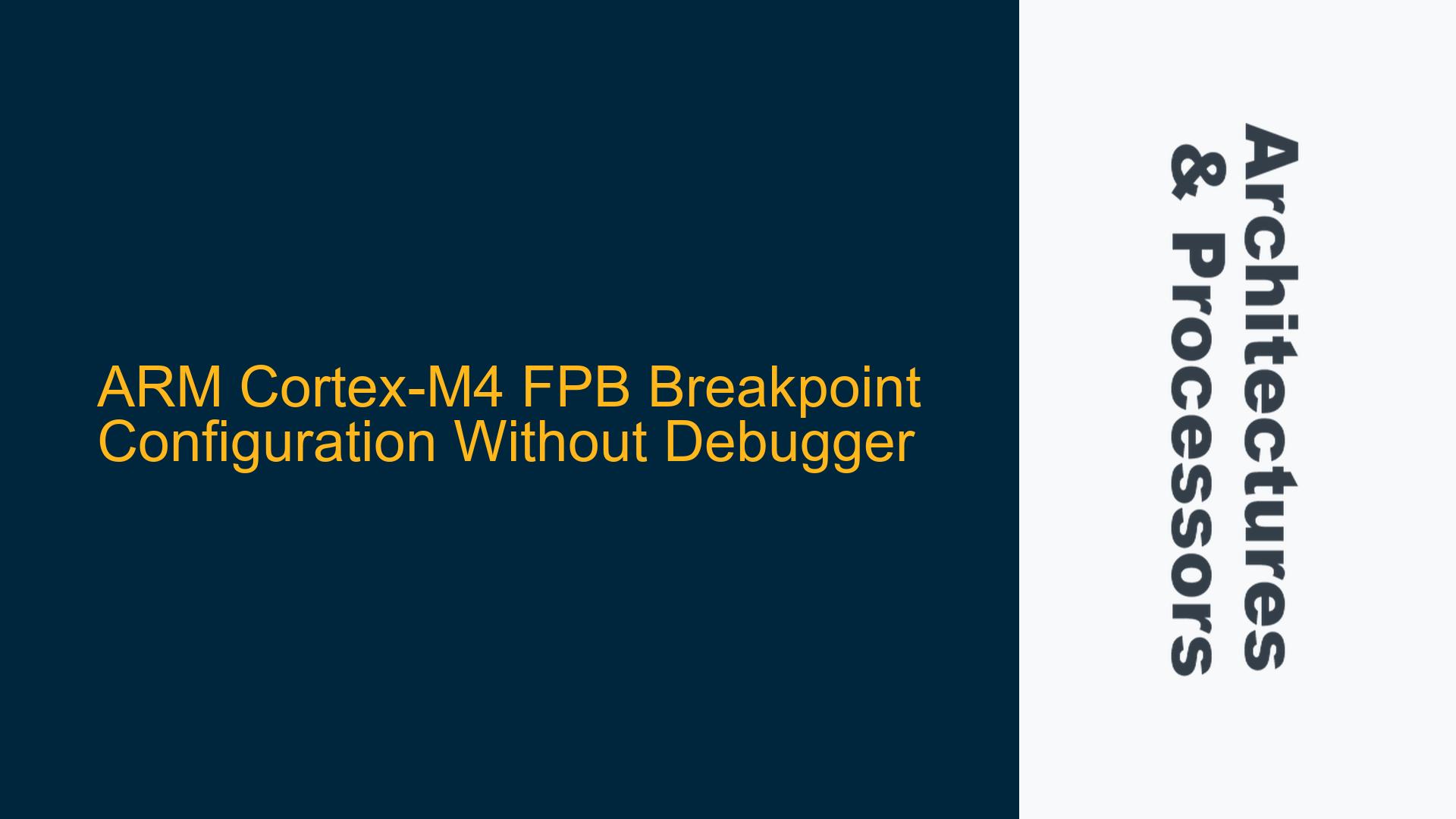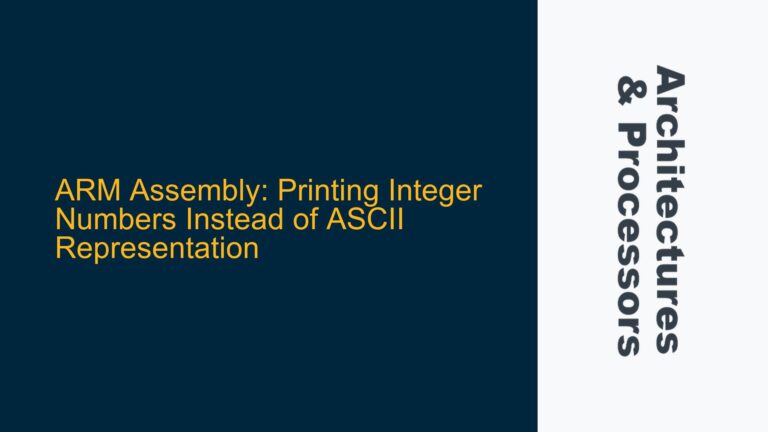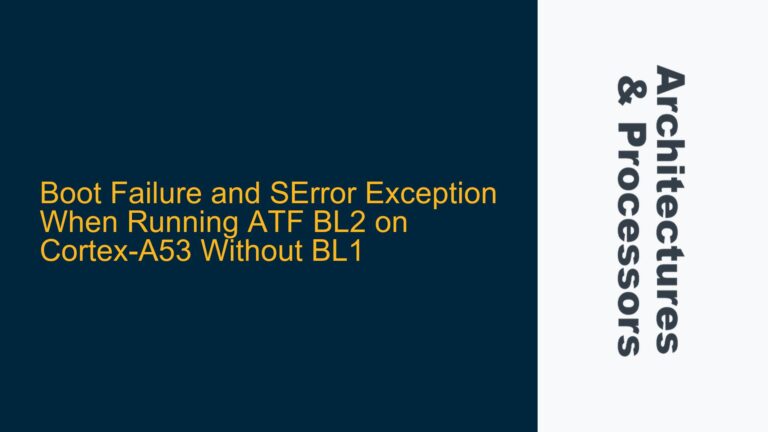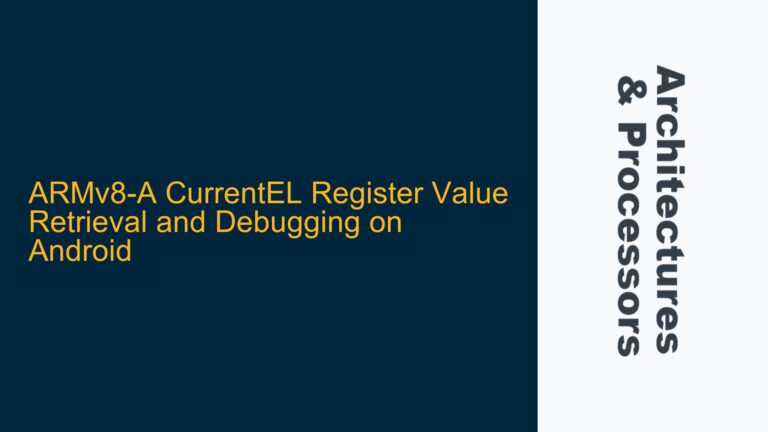DebugMon Handler Not Triggering Despite FPB Configuration
The issue revolves around the inability to trigger the DebugMon handler on an ARM Cortex-M4 processor when attempting to set a breakpoint programmatically using the Flash Patch and Breakpoint (FPB) unit. The goal is to configure the FPB to trigger a breakpoint when a specific instruction address is fetched, without relying on an external debugger. The user initially attempted to enable the DebugMon handler, set the FP_COMP (Flash Patch Comparator) register, and configure the FP_CONT (Flash Patch Control) register but failed to achieve the desired behavior. The key issue lies in the incomplete configuration of the FPB unit, specifically the FP_CONT register, which was not fully enabled.
The FPB unit is a critical component in ARM Cortex-M processors for implementing breakpoints and patching flash memory. It allows developers to set hardware breakpoints by comparing the program counter (PC) with predefined addresses stored in the FP_COMP registers. When a match occurs, the FPB can either replace the instruction with a breakpoint instruction or trigger a debug event. However, the FPB must be properly configured, and the DebugMon handler must be enabled to handle the debug event.
In this case, the user correctly identified the need to set the FP_COMP register to the target address and enable the DebugMon handler. However, the FP_CONT register was not fully configured, which prevented the FPB from functioning as intended. The FP_CONT register controls the overall operation of the FPB unit, including enabling the unit and configuring its behavior. Without setting the appropriate bits in FP_CONT, the FPB unit remains inactive, and no breakpoints are triggered.
Missing FP_CONT Register Configuration and DebugMon Handler Setup
The primary cause of the issue is the incomplete configuration of the FP_CONT register. The FP_CONT register at address 0xE0002000 controls the global enable and configuration of the FPB unit. Specifically, the lower two bits of FP_CONT (bits 0 and 1) must be set to enable the FPB unit and allow it to generate breakpoints. In the user’s initial attempt, these bits were not set, which rendered the FPB unit inactive.
Additionally, the DebugMon handler must be properly configured and enabled in the Nested Vectored Interrupt Controller (NVIC). The DebugMon handler is a low-priority exception that handles debug events, including breakpoints triggered by the FPB unit. If the DebugMon handler is not enabled or incorrectly configured, the processor will not execute the handler when a breakpoint is triggered.
Another potential cause is the incorrect setting of the FP_COMP register. The FP_COMP register must be set to the exact address of the instruction where the breakpoint should occur. If the address is incorrect or misaligned, the FPB unit will not match the program counter, and no breakpoint will be triggered. Furthermore, the FPB unit has a limited number of comparators (typically six on Cortex-M4 processors), and attempting to use more than the available comparators can lead to unexpected behavior.
Enabling FPB Unit and Configuring DebugMon Handler for Breakpoints
To resolve the issue, the FP_CONT register must be properly configured to enable the FPB unit. This involves setting the lower two bits of the FP_CONT register at address 0xE0002000. The following code snippet demonstrates the correct configuration:
#define FP_CONT (*(volatile unsigned int*)0xE0002000)
FP_CONT |= 0x3; // Enable FPB unit and allow breakpoints
This code sets bits 0 and 1 of the FP_CONT register, enabling the FPB unit and allowing it to generate breakpoints. After enabling the FPB unit, the FP_COMP register must be set to the target address where the breakpoint should occur. The following code snippet demonstrates how to set the FP_COMP register:
#define FP_COMP (*(volatile unsigned int*)0xE0002008)
FP_COMP = (target_address & 0xFFFFFFFC) | 0x1; // Set breakpoint address and enable comparator
In this code, target_address is the address of the instruction where the breakpoint should occur. The address is masked with 0xFFFFFFFC to ensure it is aligned to a 4-byte boundary, and the least significant bit is set to enable the comparator.
Next, the DebugMon handler must be enabled in the NVIC. The following code snippet demonstrates how to enable the DebugMon handler:
#define NVIC_ISER (*(volatile unsigned int*)0xE000E100)
NVIC_ISER |= (1 << 12); // Enable DebugMon handler (exception number 12)
This code sets bit 12 of the NVIC Interrupt Set-Enable Register (ISER) to enable the DebugMon handler. Once the handler is enabled, it will be executed when a breakpoint is triggered by the FPB unit.
Finally, the DebugMon handler must be implemented to handle the breakpoint event. The following code snippet demonstrates a basic implementation of the DebugMon handler:
void DebugMon_Handler(void) {
// Handle breakpoint event
// Add custom logic here
}
This handler can be customized to perform specific actions when a breakpoint is triggered, such as logging debug information or modifying program state.
In summary, the key steps to resolve the issue are:
- Enable the FPB unit by setting the appropriate bits in the FP_CONT register.
- Set the FP_COMP register to the target address where the breakpoint should occur.
- Enable the DebugMon handler in the NVIC.
- Implement the DebugMon handler to handle breakpoint events.
By following these steps, the FPB unit will be properly configured to trigger breakpoints without the need for an external debugger, and the DebugMon handler will be executed when a breakpoint occurs. This approach provides a powerful tool for debugging and monitoring the behavior of ARM Cortex-M4 applications in real-time.






